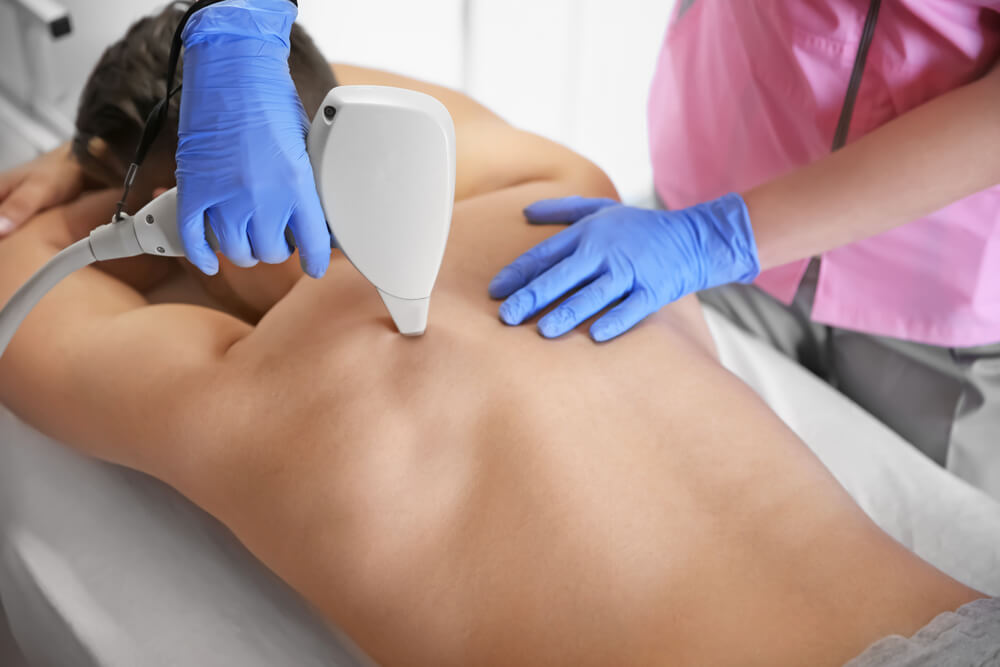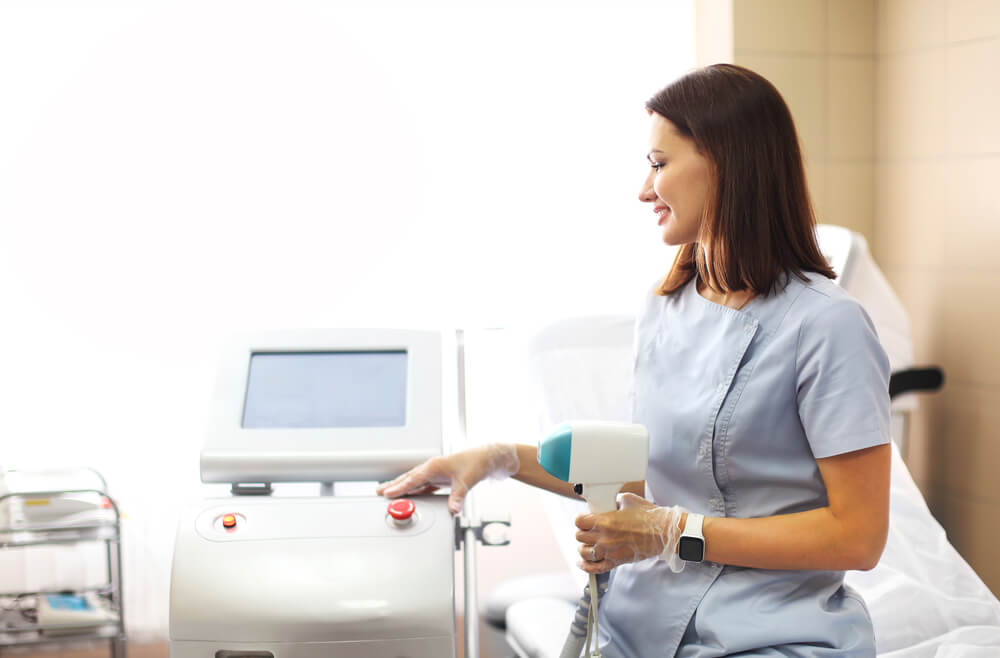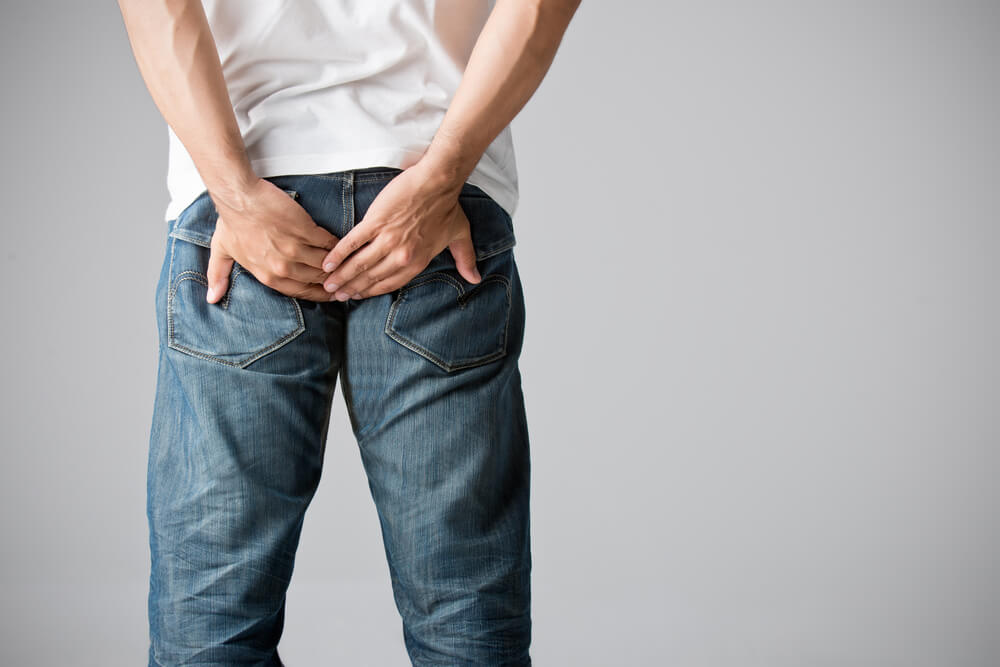Those who experience chronic pilonidal sinus often deal with a significant amount of pain. One of the main reasons for pilonidal cyst recurrence, and for it to develop in the first place, is when hair on the body grows inwards. Certain factors can make this disease more likely to occur, including sitting in one place for too long, wearing clothing that’s tight, and having excess body hair. However, other substances can also cause chronic pilonidal sinus.
The main treatment for chronic pilonidal sinus is surgery. However, pilonidal cyst recurrence is common after receiving this type of treatment. Therefore, it’s highly recommended to get laser hair removal. By doing so, problematic hairs can be removed and their thickness significantly reduced. When combined with other general hygiene methods, patients typically see a massive reduction in pilonidal cyst recurrence.
Understanding Laser Hair Removal Treatment
In addition to using this method to tackle recurring pilonidal cysts, laser hair removal treatments are used for many reasons. For example, they are used to remove ingrown hairs, folliculitis, hirsutism, and more.
The process works by emitting certain wavelengths of light. These wavelengths are then aimed at the skin tissue, generating heat (this is called chromophore). The treatment is more suited for individuals with darker hairs, as these hairs can be removed easier.
How often do pilonidal cysts come back after using laser removal treatment? The results show a significant reduction in the chance of the disease from occurring again.

Who Typically Suffers From Chronic Pilonidal Sinus
Chronic pilonidal sinus can impact most individuals, with many wondering: can pilonidal cysts come back? However, certain groups are more likely to develop this condition. Caucasians are known to suffer from this disease the most, especially men This is because of hair growth trends and their characteristics.
Also, individuals in their late teenage years or the beginning of their 20s are more likely to experience the issue. People aged 45 or older are at less risk of the problem occurring.
As discussed, for those wondering: can pilonidal cysts come back? The answer is yes, but this depends on the treatments used.
Other Factors That Contribute to This Disease Developing
There are additional factors that can indicate that this disease may develop. They include:
- Family members having the condition
- The buttocks’ shape and how it curves
- The amount of hair that is around the sinus
- If folliculitis is present around the perianal
- The type of job worked, e.g., sitting for long periods, driving long trips
- Bathing for less than two times a week
Research shows that recurring pilonidal cysts occur a lot more in men than women. For every 100,000 individuals, approximately 26 develop the condition. And of those people that do experience it, the typical hospital stay is 4.3 days.
How Often Do Recurring Pilonidal Cysts Occur?
Can pilonidal cysts come back? Unfortunately, yes. The chance of this disease coming back can depend on the type of treatment used to remove it in the first place. More importantly, how often do pilonidal cysts come back? Unfortunately, there’s up to a 50% chance of it coming back.
If the disease comes back quickly, it’s mostly because of a few extra sinuses that weren’t located during the surgery. However, if the condition comes back later than six months after treatment, However, if the condition comes back later than six months after treatment, the area will likely be infected due to new hairs or other substances. Some individuals had even reported that the disease came back 20 years from when the surgery first took place.
Laser Hair Removal for Pilonidal Cyst Recurrence
Research evidence suggests that there is a significant reduction in recurrence rates with the use of laser hair removal. Furthermore, the more regular the laser removal sessions are during the treatment period, the reduced chance of the disease coming back.
The number of sessions a patient will need can vary, but most doctors will advise that six will be necessary. These will usually happen every six to eight weeks. Once concluded, an examination will determine if additional treatments are needed.
If you’re wondering how often do pilonidal cysts come back after the procedure has taken place, the answer is that there is an extremely low possibility.
What Happens During the Procedure
Before laser hair removal begins, the infected area must be shaved. The specialist will advise how this should be carried out. Next, a local anesthesia cream is typically used to numb the area. This helps reduce the amount of pain felt during the procedure, and once the session has ended, cooling packs are used.
A laser device is used directly on the impacted area, which, as previously mentioned, emits light rays that then turns into heat that damages the hair follicles in the area which either prevents them from growing back entirely or greatly delaying their growth.
Who Performs the Procedure
The laser hair removal procedure is typically performed by a nurse. However, no qualification is required to perform it. A nurse can provide additional support when carrying it out by helping manage pain and providing guidance on sensitive questions.
Patients are known to feel embarrassed because of where the disease occurs. That’s why nurses who carry out this procedure are trained to ensure the patient feels as comfortable as possible, trying to prevent any feeling of distress
During the treatment, a limited amount of staff will be present to help make the situation more relaxed for the patient. Also, everything will be explained about what to expect, afterward impacts, and what lifestyle changes to reduce the chances of disease recurrence.
Once the procedure is performed, the nurse will then provide or recommend specific creams that will help during the recovery period between sessions and once they’re finished.

Reduce the Chances of Recurrence Today
For those that experience this disease, or more importantly, suffer from it recurring, we’re here to help. Based in the Palm Beach County, Florida area, our highly trained specialists can provide laser hair removal to reduce the possibility of it coming back.
We understand how frustrating dealing with this condition can be. That’s why we can help answer any questions you may have and provide support throughout the process. Book an appointment today.


